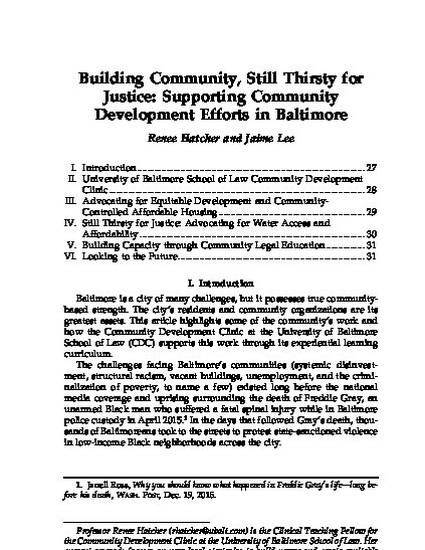
Baltimore is a city of many challenges, but it possesses true communitybased strength. The city’s residents and community organizations are its greatest assets. This article highlights some of the community’s work and how the Community Development Clinic at the University of Baltimore School of Law (CDC) supports this work through its experiential learning curriculum.
The challenges facing Baltimore’s communities (systemic disinvestment, structural racism, vacant buildings, unemployment, and the criminalization of poverty, to name a few) existed long before the national media coverage and uprising surrounding the death of Freddie Gray, an unarmed Black man who suffered a fatal spinal injury while in Baltimore police custody in April 2015.1 In the days that followed Gray’s death, thousands of Baltimoreans took to the streets to protest state-sanctioned violence in low-income Black neighborhoods across the city.
After the Baltimore Uprising,2 and in the spirit of the city’s long history of community organizing, new community-based groups formed and existing organizations created wide-tent coalitions to collectively advance their organizing efforts.3 These groups have fostered public discourse not only about police violence, but also about the economic violence that poses an everyday threat to individual and community safety and security, such as the lack of access to basic human needs—food, water, and housing.4
Available at: http://works.bepress.com/renee-hatcher/23/
